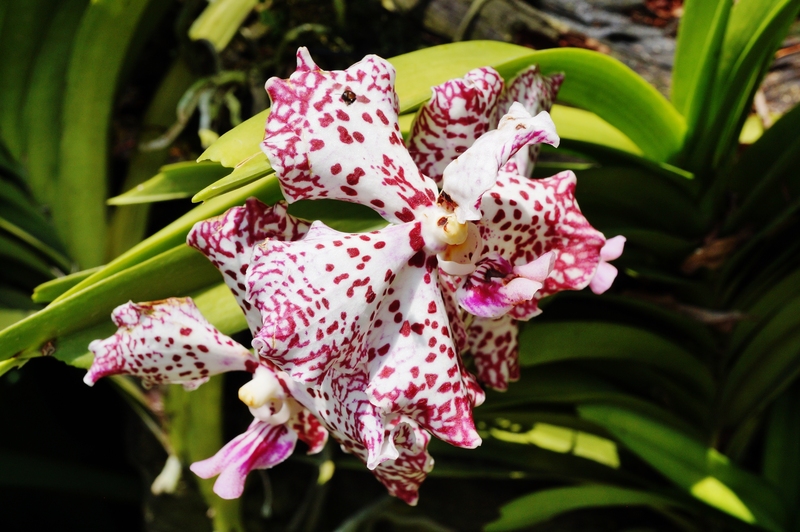Harmonizing Your Green Thumb with Dog Care
Posted on 21/06/2025
Harmonizing Your Green Thumb with Dog Care: Blooming Gardens, Happy Paws
If you adore the tranquility of tending to your vibrant garden while also cherishing the companionship of a loyal canine, you've probably pondered how to balance those passions. Harmonizing your green thumb with dog care is both an art and a science. Whether you're a seasoned gardener or a new dog parent, designing a pet-friendly garden can ensure both your plants and your pup thrive together in harmony. This comprehensive guide explores practical tips, creative solutions, and expert insights to make your garden a sanctuary where flora and Fido flourish side by side.

Why It Matters: The Intersection of Gardening and Dog Ownership
Merging your roles as gardener and pet parent enhances your home's ecosystem. Well-tended gardens provide dogs with stimulating environments, while dogs offer joy and motivation for outdoor activity. But, potential challenges--like plant toxicity, digging, or trampled flowerbeds--require careful planning. Fortunately, with thoughtful garden design and dog training, balancing gardening and dog care can be both fulfilling and sustainable.
Benefits of a Harmonized Living Space
- Physical & Mental Exercise: Dogs enjoy new scents, textures, and the movement gardens afford.
- Environmental Enrichment: Well-planned gardens stimulate your dog's senses and support natural behaviors.
- Aesthetics & Health: A flourishing landscape brings beauty, improved air quality, and stress reduction for both owner and pup.
- Stronger Human-Pet Bond: Shared outdoor activities foster companionship and mutual well-being.
Principles of Creating a Dog-Friendly, Plant-Loving Space
To harmonize your gardening efforts with dog care, start by assessing your yard from both botanical and canine perspectives. Here are key design principles to keep in mind:
- Safety First: Prioritize non-toxic, hardy plants and dog-safe gardening practices.
- Manage Zones: Create designated areas for play, potty, and relaxation versus gardening and delicate blooms.
- Ease of Maintenance: Select durable ground covers and resilient plantings that withstand canine traffic.
- Training & Routine: Reinforce boundaries and garden-friendly behaviors through positive dog training.
Understanding Dog Behavior in the Garden
Dogs approach gardens with curiosity. They sniff, dig, chase, and sometimes sample greenery. Some breeds are natural diggers or more compelled to run laps, while others may happily lounge among the foliage. Understanding your dog's behavioral tendencies helps tailor your gardening strategies.
- Digging: Dogs may dig for fun, coolness, hunting, or boredom.
- Chewing: Puppies and inquisitive dogs might nibble on plants, soil, or mulch.
- Running Paths: Dogs often patrol perimeters, leaving "dog tracks" through the grass or beds.
- Potty Habits: Unchecked, canine waste can burn grass and harm delicate blooms.
Designing a Harmonious Garden for Dogs and Plants
Safe, Non-Toxic Plant Selection
The first rule of harmonizing your love of gardening and dog ownership is to choose plants that won't harm curious pets. Many common ornamentals--like lilies, azaleas, sago palm, and foxglove--can be toxic to dogs if ingested. Instead, focus on these dog-friendly, attractive options:
- Camellia
- Sunflower
- Rosemary
- Snapdragon
- Marigold (Calendula officinalis)
- Basil
- Blueberry and Strawberry Plants
- Bamboo Palm
Always cross-reference plant choices with the ASPCA's pet-safe plant list or consult your veterinarian about new additions.
Dog-Proof Garden Structures
Structural modifications offer both beauty and function. Consider these enhancements for dog-safe gardening:
- Raised Beds: Elevate prized vegetables or flowers out of paw-level reach.
- Decorative Fencing: Low woven borders or picket fencing keep dogs out of sensitive zones while adding charm.
- Paths and Runs: Lay gravel, flagstone, or mulch paths where your dog naturally patrols--embracing their instincts instead of fighting them.
- Canine Dig Pit: Offer a sandbox or dedicated area for permissible digging, directing energy away from flowerbeds.
- Sun and Shade: Plant trees or install shade sails to create cool lounging spots for overheated pets.
Choosing the Right Ground Cover
Grass lawns don't always withstand active dogs. Mix in robust, low-maintenance alternatives for the high-traffic zones:
- Clover: Resilient, soft, and gentle on paws; fixes nitrogen for soil health.
- Buffalo Grass: Drought-tolerant and tough, requiring less mowing and water.
- Moss or Creeping Thyme: Perennial, fragrant, and beautiful between pavers.
- Mulch (Never Cocoa Mulch): Hardwood or cedar is best, but confirm it's untreated and dog-safe. Never use cocoa mulch, as it's toxic to dogs.
Dog Care Tips That Support Your Garden
Regular Exercise Reduces Mischief
Dogs with enough physical and mental stimulation are less likely to dig, chew, or trample beds out of boredom. Daily walks, games, and garden time help burn off excess energy, allowing your green thumb to remain undisturbed.
Consistent Potty Training
Dedicate a specific area of your yard for dog elimination. Use positive reinforcement to direct your dog there, and protect your favorite ornamental spaces from urine burn. For male dogs, consider marking posts or stones to protect shrubs and flowers.
Safe Pest Control Methods
Pet-safe gardening means avoiding harsh chemicals. Opt for:
- Organic pest deterrents such as neem oil, insecticidal soap, or diatomaceous earth.
- Physical barriers (row covers, mesh, collars) to protect fragile sprouts.
- Beneficial insects--ladybugs and predatory nematodes--to naturally control pests.
- Avoid all slug bait, rat poison, and synthetic pesticides in dog-accessible areas.
Beware of Fertilizer and Compost Hazards
Dog-friendly gardening requires caution with fertilizers and compost:
- Store fertilizer bags securely; ingesting bone meal, blood meal, or iron-based supplements can sicken pets.
- Keep compost bins covered. Moldy kitchen scraps or coffee grounds are harmful if scavenged.
Training: Bridging the Human-Canine Gardening Divide
Gardening enthusiasts can shape their dogs' behavior for peaceful cohabitation. Consider the following dog training strategies in the garden:
- Boundary Training: Mark 'no-go' garden beds with visible edging and reward when your dog stays out.
- Leave It Command: Teach "leave it" or "off" to deter plant-eating or digging.
- Supervised Exploration: Stay outside with your dog to intervene and redirect, especially in spring when beds are most vulnerable.
- Enrichment Toys: Provide puzzle feeders, chew toys, or fetch objects to occupy your dog while you work on garden tasks.
- Positive Reinforcement: Always reward calm, garden-friendly behavior!
Low-Maintenance Plantings That Suit Busy Dog Parents
Not all gardeners have time for daily pruning, watering, or fencing repairs. Low-maintenance, dog-tolerant perennial beds help your space survive canine antics, even when your attention is split:
- Hostas: Hardy shade plants not palatable to most dogs.
- Lavender: Fragrant, pest-repellent, and non-toxic in small amounts.
- Ornamental Grasses: Tough, architectural, and generally unappealing for digging.
- Daylilies: Vibrant bloomers, hardy to trampling (note: avoid ingestion of large amounts).
- Ferns: Especially sword ferns, which are non-toxic and lush.
Monthly Garden Chores for Pet-Friendly Landscapes
Spring
- Test fences and gates for gaps or loose hinges.
- Mulch beds to cover exposed soil and deter digging.
- Plant warm-season ground covers as dog-resistant lawns emerge from dormancy.
Summer
- Keep clean water in shaded spots for your dog.
- Weed regularly to keep toxic invaders away.
- Monitor and refresh worn paths to minimize dust and muddy paws indoors.
Autumn
- Rake fallen leaves--especially those from toxic trees like black walnut.
- Add autumn-blooming, dog-friendly perennials for late color.
- Reinforce barriers before winter storms.
Winter
- Clear snow and ice from dog paths; avoid salt-based de-icers.
- Protect sensitive shrubs with burlap or fencing from dog pee and trampling.

Troubleshooting: Common Conflicts and Smart Solutions
- Persistent Digging: Install chicken-wire mesh under mulch in problem areas, or offer a designated doggie dig zone.
- Plant Chewing: Spray safe deterrents (bitter apple) or fence out high-value edibles.
- Dead Grass from Urine: Hose down spots quickly, patch with clover or resilient seed blends, and direct potty habits.
- Muddy Paws: Use flagstone or pea gravel paths. Keep a paw-washing station by the back door.
Conclusion: A Happy Balance Blooms
The journey to harmonize your passion for gardening with responsible dog care is a rewarding one. With mindful plant selection, smart landscaping, pet-safe gardening practices, and consistent dog training, both your garden and your dog can flourish. Enjoy the year-round beauty and lively companionship that emerges when your love for the green world and your canine's joyful spirit work in tandem. As you cultivate your landscape and nurture your four-legged friend, you create a home that's truly, blissfully alive.
Additional Resources for Dog-Safe Gardening
- ASPCA's Toxic and Non-Toxic Plants List
- Gardeners' Pet-Friendly Gardening Tips
- Creating a Safe Backyard for Dogs and Wildlife
By following these expert suggestions, you'll enjoy harmonizing your green thumb with dog care--and discover that a lush, thriving garden and a happy, healthy dog are the perfect companions.

